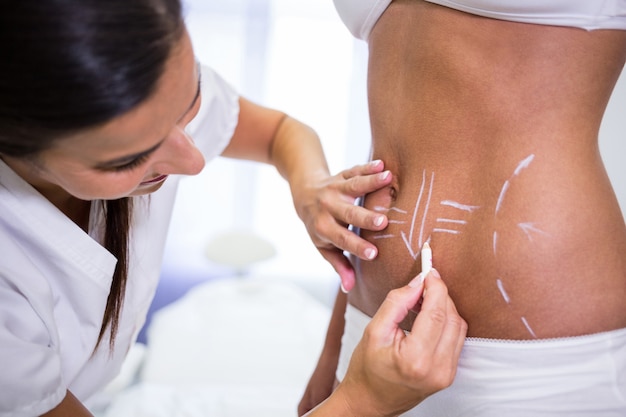
### Understanding Cellulite: Causes, Symptoms, and Ways to Manage It
Cellulite is a widespread skin condition that creates a lumpy, dimpled appearance on areas like the thighs, buttocks, hips, and abdomen. While it’s completely harmless, it’s more common in women than men and is often linked to excess body fat. Despite various medical treatments aimed at addressing cellulite, they often lack immediate or long-lasting effects. Fortunately, many people find natural ways to reduce its appearance through lifestyle changes, weight management, exercise, and skincare routines.
### What Is Cellulite?
Cellulite occurs when fat deposits push through the connective tissue beneath the skin, leading to uneven, dimpled skin texture. It frequently develops in areas where fat tends to accumulate, such as the thighs, hips, and abdomen. Nearly 80–90% of all women experience some degree of cellulite during their lifetime, largely due to differences in body composition and connective tissue distribution between men and women. It’s known by several nicknames, including “orange-peel skin” and “cottage-cheese skin.”
### Levels of Cellulite
Cellulite can vary in severity, categorized as follows:
– **Grade 1 (Mild):** Slight sagging with a few shallow depressions, giving the skin an orange-peel appearance.
– **Grade 2 (Moderate):** More noticeable depressions (5–9) with a cottage-cheese-like texture.
– **Grade 3 (Severe):** Deep, mattress-like depressions (10 or more) with significant sagging.
### Symptoms of Cellulite
It’s easy to spot cellulite as dimpled or bumpy skin. In mild cases, you might only notice it when you pinch the skin in affected areas, such as the thighs or buttocks. More severe cases appear as uneven, rumpled skin with clear peaks and valleys. While thighs and buttocks are the most typical locations, cellulite can also appear on the breasts, arms, and lower abdomen. Women are more prone to this condition due to biological and hormonal factors.
### Why Does Cellulite Develop?
The exact cause of cellulite is unclear, but it results from the interaction between fat deposits and connective tissue under the skin. In women, the connective tissue and fat cells are arranged vertically, which makes it easier for fat to push through and create a dimpled appearance. In men, this tissue tends to criss-cross, reducing the likelihood of cellulite.
Factors contributing to cellulite include:
**1. Hormonal Changes:**
Fluctuations in hormones like estrogen, insulin, and thyroid hormones can play a major role. For example, lower estrogen levels during menopause can reduce blood flow to connective tissue, decreasing collagen production and making cellulite more noticeable.
**2. Genetics:**
Genetic factors influence metabolism, fat distribution, and skin structure, making some people predisposed to cellulite.
**3. Diet and Lifestyle:**
Eating a diet high in fat, carbs, and salt while lacking fiber can increase cellulite risk. Smoking, lack of exercise, and sitting or standing for long periods also contribute. Wearing tight clothing, like elastic underwear, can reduce blood flow and lead to cellulite formation over time.
**4. Excessive Weight:**
Carrying excess fat, especially in areas prone to cellulite like the thighs and buttocks, increases the likelihood of its development. Though even people with a healthy weight can experience cellulite, the issue often becomes more pronounced with weight gain.
**5. Aging:**
As skin loses elasticity and becomes thinner with age, cellulite can become more visible.
### Managing and Treating Cellulite
#### Natural Remedies
Several non-invasive methods can help improve the appearance of cellulite:
– **Exercise:** Combining strength training with cardio helps burn fat, tone muscles, and smooth skin.
– **Stay Hydrated:** Drinking plenty of water keeps skin hydrated, flushes out toxins, and makes cellulite less obvious. Aim for 8–9 glasses daily.
– **Healthy Diet:** Incorporate fiber-rich foods while avoiding processed or sugary foods that encourage fat buildup. This supports a healthier weight and reduces cellulite risk.
– **Dry Brushing:** Using a soft-bristled brush on dry skin in circular motions can improve circulation, remove dead skin cells, and promote new skin growth.
#### Medical Treatments
If at-home remedies don’t provide the desired results, medical treatments may help temporarily:
– **Acoustic Wave Therapy:** Uses sound waves to break up connective tissue bands.
– **Laser Treatments:** Lasers break connective tissue bands and boost collagen production, potentially improving skin texture for up to a year.
– **Vacuum-Assisted Tissue Release:** Cuts connective bands, allowing the skin to rise and smooth out dimples. Effects may last up to three years but require precise execution.
– **Subcision:** A needle breaks up connective bands under the skin, with results lasting two or more years.
– **Carboxytherapy:** Involves injecting carbon dioxide gas beneath the skin to reduce cellulite, though it can cause discomfort and bruising.
– **Endermologie:** Uses deep massage and suction to lift the skin, but the results are typically short-lived.
#### Topical Creams
Caffeine-based creams can temporarily dehydrate fat cells, reducing their visibility. Retinol creams may also help by thickening the upper skin layer, though consistent use for six months or more is necessary for noticeable results. Always do a patch test to ensure no adverse skin reactions occur.
#### Treatments With Limited Research
Procedures like laser-assisted liposuction, ultrasonic liposculpting, and radiotherapy show potential but lack sufficient evidence to prove their long-term effectiveness. Some, like mesotherapy (injecting substances into the skin) and cryolipolysis (freezing fat cells), are discouraged due to safety concerns or inefficacy.
### Practical Tips for Prevention
To reduce the risk of cellulite, maintain a healthy weight, exercise regularly, avoid smoking, and limit alcohol consumption. Simple changes, such as wearing non-restrictive clothing and practicing an active lifestyle, can also make a difference.
If you opt for medical treatments, keep in mind that results can vary and may not be permanent. Consistent natural strategies like staying active, eating well, and keeping your skin hydrated remain an excellent starting point for managing cellulite.